YAMAHA FX500 User Manual

YAMAHA ®
AUTHORIZED PRODUCT MANUAL
SIMUL-EFFECT PROCESSOR

YAMAHA
Operation Manual
Congratulations!
You are the proud owner of a Yamaha FX500 SIMUL-EFFECT PROCESSOR. The FX500 is a high-performance digital effect device which provides a chain of up to 5 different effects, and extensive programming capability so you can create “custom” effect chains to suit your own specific musical requirements. With programmable compressor, distortion, equalizer, modulation and reverb/delay effect stages, the FX500 gives you a complete state-of-the-art signal-processing system in one compact package. 60 superlative preset effect programs are provided that you can simply select and use right away, while 30 RAM memory locations can be used to store your original signal-processing creations. Furthermore, the effects are all created using leading-edge Yamaha digital signal processing technology, so the sound is nothing less than superb.
Please read through this operation manual thoroughly while learning to use your FX500, in order to take full advantage of all the sophisticated capabilities it provides — and keep the manual in a safe place for later reference!
1
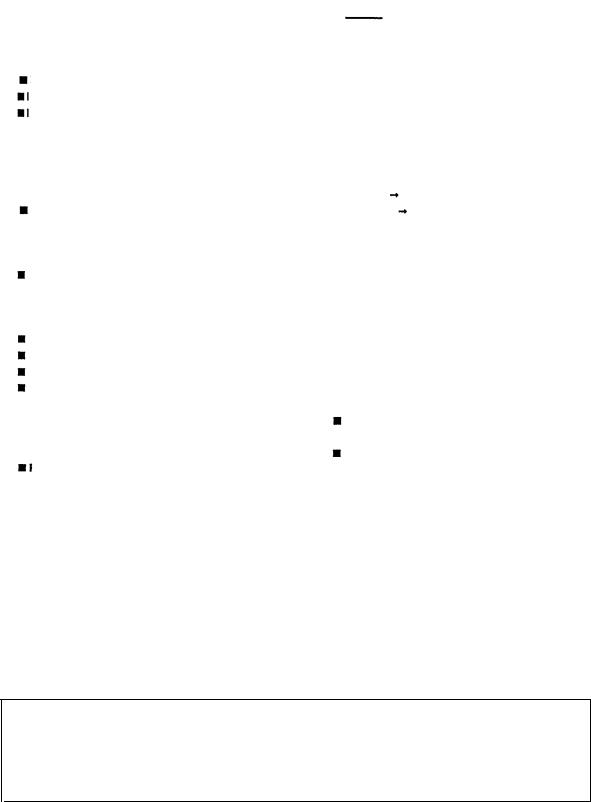
 CONTENTS
CONTENTS
1. Precautions .............................................................. |
3 |
2. The FX500: What It Is and What It Does ................. |
4 |
Effects ................................................................... |
4 |
Memory Configuration ......................................... |
4 |
MIDI Control .......................................................... |
4 |
3. Connections: Basic System Setup ......................... |
5 |
4. The Controls: A Quick Operation Guide ................ |
7 |
5. The MEMORY Mode: |
|
Selecting Effect Programs ...................................... |
9 |
6. Effect Processor Selection ................................... |
10 |
Reversing the Order of the Modulation & |
|
Reverb Stages ..................................................... |
10 |
7. The Parameter Mode: |
|
Editing the Effect Programs .................................. |
11 |
Editing Parameter Data ...................................... |
11 |
• Assigning MIDI CONTROLLERS |
|
to Effect Parameters ....................................... |
11 |
• Memory Store Operation ................................ |
12 |
COMPRESSOR ................................................... |
12 |
DISTORTION ....................................................... |
13 |
EQUALlZER ........................................................ |
13 |
n MODULATlON ..................................................... |
14 |
• Chorus ............................................................. |
14 |
• Flanger ............................................................. |
14 |
• Symphonic ...................................................... |
15 |
• Tremolo ............................................................ |
15 |
REVERB/DELAY ................................................. |
15 |
• Reverb Group .................................................. |
16 |
• Reverb Hall • Reverb Room |
|
• Reverb Vocal • Reverb Plate ....................... |
16 |
• Early Reflection Group ................................... |
16 |
||
• E/R Hall • E/R Random |
|
||
• OR Reverse • E/R Plate ................................ |
16 |
||
• Delay Group .................................................... |
|
17 |
|
• Delay .............................................................. |
|
|
17 |
• Echo ............................................................... |
|
|
17 |
• Reverb and Delay |
Group (Parallel) ................ |
17 |
|
• Reverb + Delay .............................................. |
|
17 |
|
• Reverb and Delay |
Group (Serial) ................... |
18 |
|
• Delay |
Reverb |
|
|
• Reverb |
Delay ............................................. |
|
18 |
8. The Utility Mode ..................................................... |
|
19 |
|
n Program Title Edit ............................................... |
|
19 |
|
n MIDI Program Selection: MIDI Setup |
|
||
and Program Change Table Edit ....................... |
19 |
||
• MIDI Setup ....................................................... |
|
20 |
|
• Program Change Table Edit ........................... |
20 |
||
n MIDI Parameter Control: Control Change 1 |
|
||
Table Edit and Control Change 2 Table Edit .... |
20 |
||
• Control Change 1 Table Edit .......................... |
21 |
||
• Control Change 2 Table Edit .......................... |
21 |
||
• Assigning CONTROLLER 1 and |
|
||
CONTROLLER 2 to Specific Effects .............. |
21 |
||
Footswitch Function Select ................................ |
22 |
||
• Using Tap Tempo Delay .................................. |
22 |
||
Footswitch Memory Recall Range Edit ............ |
23 |
||
9. Specifications ......................................................... |
|
24 |
|
10. MIDI Data Format ................................................... |
|
26 |
|
11. Block Diagram ........................................................ |
|
30 |
|
12. FX500 Parameter Chart ......................................... |
31 |
||
13. Preset Program Parameters .................................. |
32 |
||
CANADA
THIS APPARATUS COMPLIES WITH THE “CLASS B” LIMITS FOR RADIO NOISE EMISSIONS SET OUT IN RADIO INTERFERENCE REGULATIONS.
CET APPAREIL EST CONFORME AUX NORMES “CLASSE B”, POUR BRUITS RADIOELECTRIQUES. TEL QUE SPECIFIER DANS LE REGLEMENT SUR LE BROUILLAGE RADIOELECTRIQUE.
2
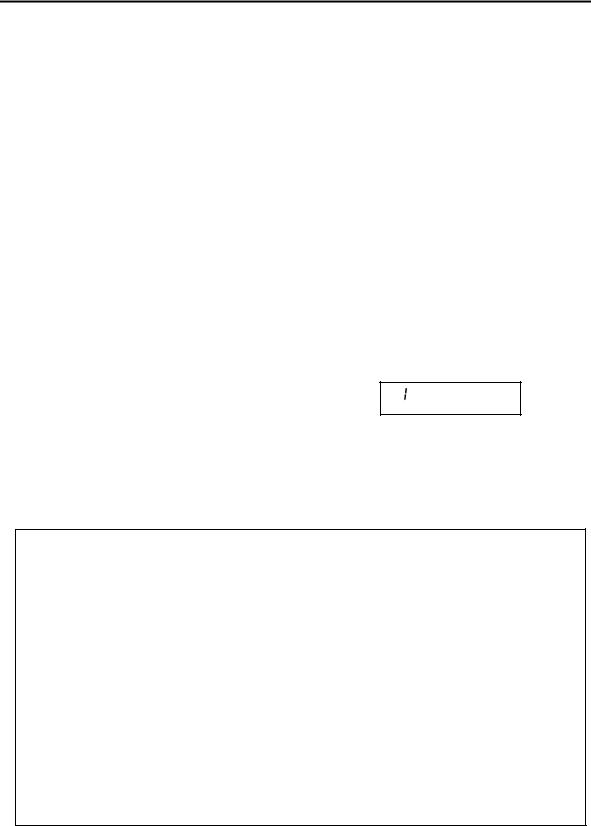
1. Precautions !! PLEASE READ THIS BEFORE PROCEEDING !!
1. AVOID EXCESSIVE HEAT, HUMIDITY, DUST AND VlBRATlON
Keep the unit away from locations where it is likely to be exposed to high temperatures or humidity-such as near radiators, stoves, etc. Also avoid locations which are subject to excessive dust accumulation or vibration which could cause mechanical damage.
2. AVOID PHYSICAL SHOCKS
Strong physical shocks to the unit can cause damage. Handle it with care.
3. DO NOT OPEN THE CASE OR ATTEMPT REPAIRS OR MODlFlCATlONS YOURSELF
This product contains no user-serviceable parts. Refer all maintenance to qualified Yamaha service personnel. Opening the case and/or tampering with the internal circuitry will void the warranty.
4. MAKE SURE POWER IS OFF BEFORE MAKING OR REMOVING CONNECTlONS
Always turn the power OFF prior to connecting or disconnecting cables.
5. HANDLE CABLES CAREFULLY
Always plug and unplug cables — including the cord of the power supply — by gripping the connector, not the cord.
6. CLEAN WITH A SOFT DRY CLOTH
Never use solvents such as benzine or thinner to clean the unit. Wipe clean with a soft, dry cloth.
7. ALWAYS USE THE CORRECT POWER SUPPLY
Always use the supplied AC Adaptor to power your FX500 or, if the original adaptor is lost or broken, a replacement or equivalent type obtained from your Yamaha dealer. Also, make sure that the adaptor you have is appropriate for the AC mains supply voltage in the area where you intend to use the FX500 (the correct INPUT voltage is marked on the adaptor).
8. ELECTRICAL INTERFERENCE
Since the FX500 contains digital circuitry, it may cause interference and noise if placed too close to TV sets, radios or similar equipment. lf such a problem does occur, move the FX500 further away from the affected equipment.
9. MEMORY BACKUP
The FX500 contains a special long-life battery that retains the contents of its internal RAM memory even when the power is turned OFF. The backup battery should last for approximately 5 years. When the battery voltage drops to a level that is too low to maintain the memory contents, the following message will appear on the FX500 display when the power is turned ON:
** WARNING ** MEMORY DATA
If this display appears, have the backup battery replaced by qualified Yamaha service personnel. DO NOT ATTEMPT TO REPLACE THE BACKUP BATTERY YOURSELF!
FCC CERTIFICATION (USA)
This equipment generates and uses radio frequency energy and if not installed and used properly, that is, in strict accordance with the manufacturer’s instructions, may cause interference to radio and television reception. It has been type tested and found to comply with the limits for a Class B computing device in accordance with the specifications in Subpart J of Part 15 of FCC Rules, which are designed to provide reasonable protection against such interference in a residential installation. However, there is no guarantee that interference will not occur in a particular installation. If this equipment does cause interference to radio or television reception, which can be determined by turning the equipment off and on, the user is encouraged to try to correct the interference by one or more of the following measures:
Reorient the receiving antenna.
Relocate the equipment with respect to the receiver.
Move the equipment away from the receiver. Plug the equipment into a different AC power outlet so that it and the receiver are on different branch circuits.
If necessary, the user should consult the dealer or an experienced radio/television technician for additional suggestions. The user may find the following booklet prepared by the Federal Communications Commission helpful:
“How to Identify and Resolve Radio-TV Interference Problems”.
This booklet is available from the U.S. Government Printing Office, Washington, DC 20402, Stock No. 004-000-00345-4.
3
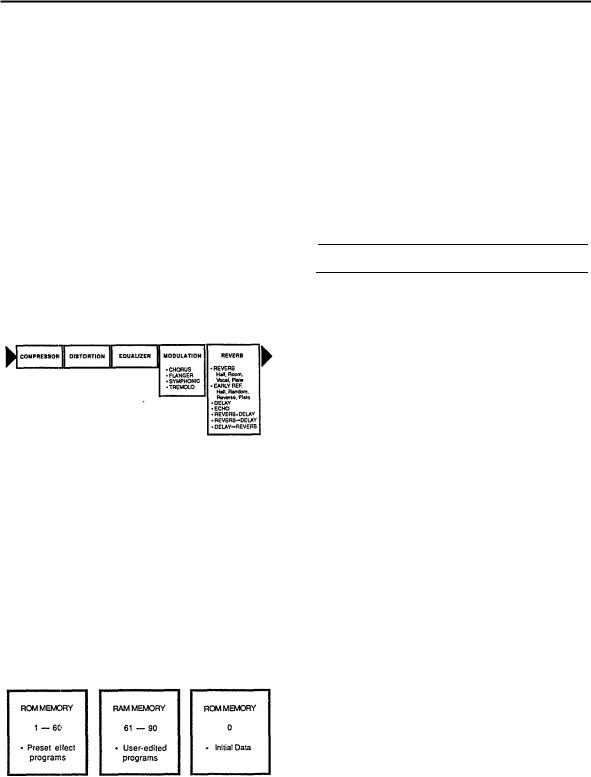
2. The FX500: What It Is and What It Does
n Effects
The FX500 SIMUL-EFFECT PROCESSOR is a highperformance digital signal processor intended for use with electric guitars, electronic keyboards or other instruments. lt employs leading-edge Yamaha digital signal processing technology to provide a “chain” of up to six independent effects that can be independently controlled to produce precisely the required overall sound. As shown below, the FX500 includes five effect (compressor, distortion, equalizer, modulation and reverb) stages. Stages can be turned on or off as required, and the order of the modulation and reverb stages can be reversed. The compressor. distortion and equalizer stages are basically single-function processors. The modulation and reverb stages each incorporate a number of separate effects which can be selected and used as required. Several of the reverb effects actually combine both delay and reverb, effectively giving you a total of six effects in the chain! Each effect has a number of parameters which can be adjusted to tailor its sound to your specific musical needs.
 Memory Configuration
Memory Configuration
The FX500 has a total of 91 memory locations. Memory locations 1 through 60 are ROM (Read Only Memory) containing 60 pre-programmed effects that you can simply select and use. Memory locations 61 through 90 are RAM (Random Access Memory), and can be used to store original effect programs that you create by editing the presets. The 30 RAM memory locations (61 — 90) originally contain a selected group of the preset programs. The last memory location — memory location number 0 — contains “initialized data” that can be used as a basis for creating your own original effects programs from scratch.
|
Program |
Program Title |
|
Program |
|
Program Title |
||||
|
No. |
|
|
|
No. |
|
|
|
|
|
1 |
Broad |
Dist. |
31 |
|
Clisp Chords |
|||||
|
2 |
Warm |
Strings |
32 |
|
Sharp |
Chops |
|||
|
3 |
Standard Jazz |
33 |
|
Tremolo |
|||||
|
4 |
Soft |
Echo |
34 |
|
Sweet |
Flange |
|||
|
|
|
|
|
|
|
||||
5 |
Power Pan |
35 |
|
Chord-Clouds |
||||||
6 |
Trad. |
Dist. |
36 |
|
Light Symphonic |
|||||
7 |
Dark |
Dist. |
37 |
|
Clean |
Acoustic |
||||
|
8 |
Ring |
Dist. |
38 |
|
Acoustic Solo |
||||
9 |
Metal Overdrive |
39 |
|
Lush Strings |
||||||
|
10 |
Echo |
Dist. |
40 |
|
Soft |
Focus |
|||
11 |
Tight |
Dist. |
41 |
|
Brass |
Room |
||||
12 |
Blue |
Dist. |
42 |
|
Brass Burst |
|||||
|
13 |
Fuzz |
|
43 |
|
Trumpet Flange |
||||
14 |
Slap |
Dist. |
44 |
|
Brass Energizer |
|||||
|
15 |
Power Leads |
45 |
|
Echo Rhythm |
|||||
|
16 |
Chasing Leads |
46 |
|
SumphonicHall |
|||||
17 |
Power |
Stack |
47 |
|
Horror House |
|||||
18 |
Symphonic Dist. |
48 |
|
S i t a r |
||||||
|
19 |
Turbo Drive |
49 |
|
Staccato Vibe |
|||||
|
20 |
Chasing |
Rhythm |
50 |
|
Sweep Gate |
||||
|
21 |
Stereo Dist. |
51 |
|
Monk |
Akkal |
||||
22 |
Fusion Dist. |
52 |
|
Straight |
Bass |
|||||
23 |
Boogie Room |
53 |
|
Slap |
|
Bass |
||||
|
24 |
Buzz Backer |
54 |
|
Fretless Bass |
|||||
25 |
Liquid Dist. |
55 |
|
Trad. Bass |
||||||
26 |
Electric Chords |
56 |
|
S a x |
|
S o l o |
||||
27 |
Clean Repeat |
57 |
|
Vocal Reverb |
||||||
28 |
Sweet Swirl |
58 |
|
Drum Gate/Rev |
||||||
29 |
Mild Motion |
59 |
|
Tight Snare |
||||||
|
|
|
|
|
|
|
||||
30 |
Pearly Chords |
60 |
|
Rock Drums |
||||||
|
|
|
|
|
|
|
|
|
||
|
|
|
|
|
|
|
|
|
||
|
|
|
|
|
61 - 90 |
|
User Programs |
|
||
|
|
|
|
|
0 |
|
Initial Data |
|
||
n MIDI Control
For further versatility and smooth integration with MIDIbased music systems, the FX500 offers broad MIDI control capabilities. Any of its 90 memory locations may be directly selected from a remote MIDI device such as a keyboard or MIDI foot controller *. lt is also possible to directly control up to two different effect parameters simultaneously in real time. This means that two MIDI controllers (a MODULATION WHEEL and DATA ENTRY slider on a keyboard, for example) could be used to control, say, the modulation depth of the flanger effects and the reverb time of a reverb effect in real time as you play! Any two MIDI controllers can be assigned to any two effect parameters (See “MIDI Parameter Control: Control Change 1 Table Edit and Control Change 2 Table Edit” on page 20 for operational details).
•Extensive MIDI control is also possible with the MFC1 MIDI Foot Controller. Consult the MFC1 operation Manual for details.
4
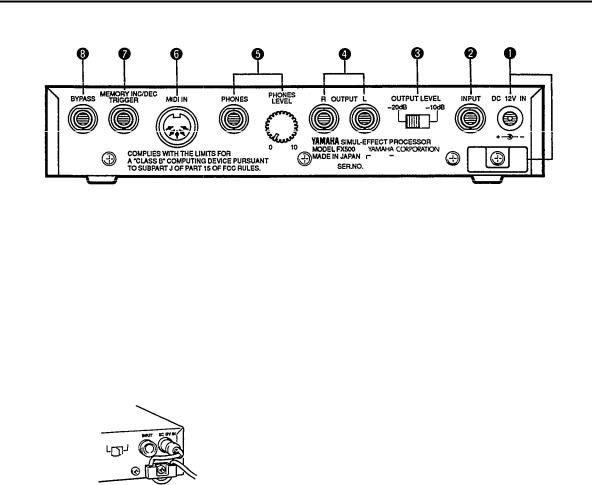
3. Connections: Basic System Setup
 DC 12V IN Jack and Cable Clip
DC 12V IN Jack and Cable Clip
The DC output cable from the supplied AC Adaptor should be connected here. When connecting the power supply, make sure that the FX500 POWER switch is in the OFF position (extended).
Plug the AC adaptor output cable into the DC 12V IN jack, and finally the adaptor’s AC plug into a convenient AC wall outlet. The cable clip located immediately below the DC 12V IN jack helps to prevent accidental unplugging of the power supply during use. Wrap the DC cable firmly around the clip a few centimeters from the plug end.
CAUTION!
Do not attempt to use a different AC adaptor to power the FX500. The use of an incompatible adaptor may cause irreparable damage to the FX500, and might pose a serious shock hazard!
 INPUT Jack
INPUT Jack
This jack duplicates the function of the front-panel INPUT jack described in the following section. It is important to note, however, that only one of the INPUT jacks can be used at a time. lf plugs are inserted into both the front and rear-panel inputs, the front-panel input jack takes priority.
 OUTPUT LEVEL Selector
OUTPUT LEVEL Selector
This switch is used to match the output level of the FX500 to the input sensitivity of the amplifier, mixing console or other device it is feeding. For compatibility with standard line-level inputs the -10 dB setting should be appropriate, while the -20 dB setting should be used when the FX500 is connected to a highsensitivity input-the input of a guitar amplifier, for example.
 OUTPUT R and OUTPUT L Jacks
OUTPUT R and OUTPUT L Jacks
These are the main stereo outputs from the FX500. We recommend using both outputs and connecting them to the corresponding right and left channels of a stereo sound system, since the full impact of many of the FX500 effects can only be appreciated in stereo. lf, however, only a mono sound system is available, use either the OUTPUT R or OUTPUT L jack.
 PHONES LEVEL Control and PHONES Jack
PHONES LEVEL Control and PHONES Jack
For private listening or practice when an external sound system cannot be used, a pair of standard stereo headphones (with a 1/4” stereo phone plug or appropriate adaptor plug) can be plugged into the PHONES jack. The PHONES LEVEL control adjusts the headphone listening level.
 MIDI IN Connector
MIDI IN Connector
The MIDI IN connector accepts MIDI signals from an external MIDI device such as a MIDI foot controller, keyboard, etc. The FX500 will accept MIDI PROGRAM CHANGE messages to directly select effect programs, or MIDI CONTROL CHANGE messages to control individual effect parameters.
[See page 19 for further details]
 MEMORY INC/DEC, TRIGGER (TAP TEMPO DELAY) Jack
MEMORY INC/DEC, TRIGGER (TAP TEMPO DELAY) Jack
An optional Yamaha FC4 or FC5 Footswitch may be connected here for convenient foot-controlled selection of effect programs or "tap tempo delay” control which is used to set delay time for the delay effects. The function of the footswitch is determined by the UTILITY mode Foot Switch Function Select function (page 22). The range of effect programs that can be selected when the footswitch is assigned to memory selection is determined by the UTlLlTY mode Footswitch Memory Recall Range Edit function (page 23).
 BYPASS Jack
BYPASS Jack
An optional Yamaha FC4 or FC5 Footswitch connected here performs exactly the same function as the frontpanel BYPASS key. Press the footswitch once to activate the bypass mode, and again to turn bypass off.
5
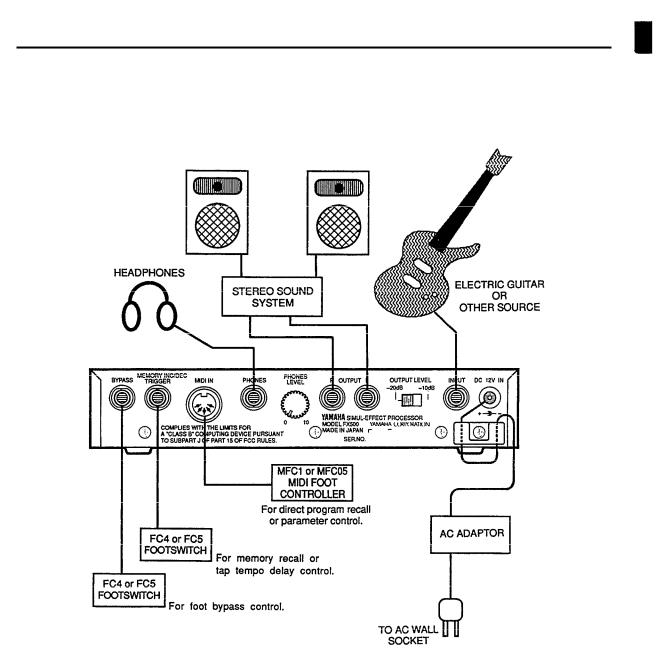
Basic System Configuration
6

4. The Controls: A Quick Operation Guide
 Power Switch
Power Switch
Press once to turn the FX500 on, and a second time to turn the power off. When the power is turned on, a title and copyright notice will appear on the display panel for a few seconds before operation actually begins.
 Input Jack
Input Jack
Plug your guitar, keyboard or other signal source in here or into the duplicate INPUT jack provided on the rear panel (see  INPUT Jack” in the “3. Connections: Basic System Setup” section). Both jacks are standard monaural 1/4” phone jacks.
INPUT Jack” in the “3. Connections: Basic System Setup” section). Both jacks are standard monaural 1/4” phone jacks.
 INPUT LEVEL Control with SIGNAL and PEAK Indicators
INPUT LEVEL Control with SIGNAL and PEAK Indicators
For the optimum input level setting, play your source at the highest level it will be played in actual use. Adjust the INPUT LEVEL control so that the SIGNAL Indicator lights most of the time but the PEAK indicator does not light, or lights only occasionally on brief high-level peaks.
Liquid Crystal Display Panel
This is the FX500’s main “information center”, providing all information necessary for effect program selection, programming and utility control.
 COMP, DIST, EQ, MOD and REV Effect Keys
COMP, DIST, EQ, MOD and REV Effect Keys
These keys function differently in the MEMORY and PARAM modes.
•When the MEMORY mode is selected (i.e. when the MEMORY key indicator is lit—see  MEMORY Mode Key”), these keys are used to turn the corresponding effect stage ON (indicator lit) or OFF (indicator out).
MEMORY Mode Key”), these keys are used to turn the corresponding effect stage ON (indicator lit) or OFF (indicator out).
[See page 10 for further details]
•When the PARAM mode is selected (i.e. when the PARAM key indicator is lit—see  PARAM Mode Key”), these keys select the various parameters available for editing in the corresponding effect stage.
PARAM Mode Key”), these keys select the various parameters available for editing in the corresponding effect stage.
[See page 11 for further details]
Arrow( |
)and( ) keys |
The and |
keys function differently in the MEMORY, |
PARAM and UTILITY modes.
•When the MEMORY mode is selected (i.e. when the
MEMORY key indicator is lit-see"  MEMORY Mode Key”), the
MEMORY Mode Key”), the and
and are used to select the desired effect program.
are used to select the desired effect program.
[See page 9 for further details]
•When the PARAM mode is selected (i.e. when the
PARAM key indicator is lit — see  PARAM Mode Key”), they are used to “edit” the selected effect parameter.
PARAM Mode Key”), they are used to “edit” the selected effect parameter.
[See page 11 for further details]
•When the UTILITY mode is selected (i.e. when the
UTILITY key indicator is lit — see"  UTILITY Mode Key”), the
UTILITY Mode Key”), the and
and keys are used to program the selected utility function.
keys are used to program the selected utility function.
[See page 19 for further details]
7
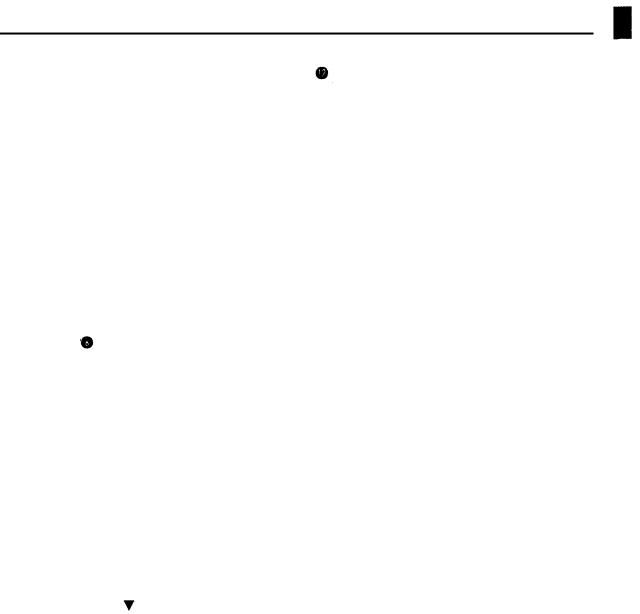
 SEL/ASN Key
SEL/ASN Key
The SEL/ASN key functions differently in the MEMORY and PARAM modes.
•When the MEMORY mode is active this key reverses the order of the MOD and REV processing stages.
[See page 10 for further details]
•In the PARAM mode, the SEL/ASN key is used to assign effect parameters for control via external MIDI controllers.
[Seepage 21 for further details]
 BYPASS Key
BYPASS Key
When the BYPASS key is pressed and “BYPASS” appears on the display panel, all FX500 effect stages are completely bypassed and the input signal is fed directly to the output. Press the BYPASS key a second time to turn the bypass function off. The rear-panel BYPASS footswitch jack can also be used for bypass control (see “ BYPASS Jack" on page 5).
 MEMORY Mode Key and lndicator
MEMORY Mode Key and lndicator
When the MEMORY key indicator is lit, the FX500 MEMORY mode is active and effect programs (1 — 90) can be selected and recalled using the  and
and  keys and RECALL key. In the MEMORY mode it is also possible to turn effect stages ON or OFF using the COMP, DIST, EQ, MOD and REV keys. The MEMORY mode can be activated while the PARAM mode is selected by pressing the MEMORY key. The MEMORY mode can not be directly selected from the UTILITY mode by pressing the MEMORY key. The UTlLlTY mode must first be exited by pressing the UTILITY key several times or holding it down (approximately 1 second) until the UTILITY key indicator goes out. [See page 9 for further details]
keys and RECALL key. In the MEMORY mode it is also possible to turn effect stages ON or OFF using the COMP, DIST, EQ, MOD and REV keys. The MEMORY mode can be activated while the PARAM mode is selected by pressing the MEMORY key. The MEMORY mode can not be directly selected from the UTILITY mode by pressing the MEMORY key. The UTlLlTY mode must first be exited by pressing the UTILITY key several times or holding it down (approximately 1 second) until the UTILITY key indicator goes out. [See page 9 for further details]
 RECALL Key
RECALL Key
After using the and
and  keys to select a disired effect program while in the MEMORY mode, the RECALL key is pressed to actually recall and activate the selected program.
keys to select a disired effect program while in the MEMORY mode, the RECALL key is pressed to actually recall and activate the selected program.
[See page 9 for further details]
 STORE Key
STORE Key
After editing any of the effect programs, the new program can be stored in any of the FX500’s RAM memory locations (61 through 90) for later recall and use. The STORE key is used to store edited data to a RAM memory location.
[See page 12 for further details]
PARAM Mode Key and lndicator
The PARAM key selects the PARAM (parameter) mode in which the individual parameters for each effect stage can be edited as required. The PARAM key indicator lights when the PARAM mode is active. The PARAM mode can not be directly selected from the UTlLlTY mode by pressing the PARAM key. The UTILITY mode must first be exited by pressing the UTILITY key several times or holding it down (approximately 1 second) until the UTILITY key indicator goes out.
[See page 11 for further details]
 UTILITY Mode Key and lndicator
UTILITY Mode Key and lndicator
Pressing this key activates the UTlLlTY mode, allowing access to 7 different utility functions:
•Program Title Edit [Page 19]
•MIDI Setup [Page 20]
•Program Change Table Edit [Page 20]
•Control Change 1 Table Edit [Page 21]
•Control Change 2 Table Edit [Page 21]
•Foot Switch Function Select [Page 22]
•Foot Switch Memory Recall Range Edit [Page 23]
The UTILITY key LED lights when the UTlLlTY mode is active. Each time the UTlLlTY key is pressed the next function on the utility “list” is selected. The mode that was active before the UTILITY key was pressed (MEMORY or PARAM) is selected following the last function on the utility list. The UTILITY mode can also be exited by pressing the UTILITY key several times or holding it down (approximately 1 second) until the UTILITY key indicator goes out.
8
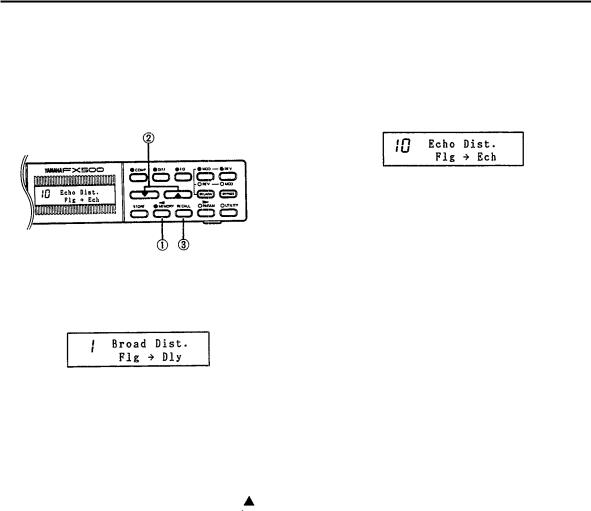
5. The MEMORY Mode: Selecting Effect Programs
In the FX500 MEMORY mode, the  and
and  keys can be used to select individual effect programs. When a new program number is selected, its number will flash on the display and its title will appear on the upper line. Press the RECALL key to actually recall and activate the selected program.
keys can be used to select individual effect programs. When a new program number is selected, its number will flash on the display and its title will appear on the upper line. Press the RECALL key to actually recall and activate the selected program.
 lf the MEMORY mode is not already selected (i.e. if the MEMORY key indicator is not lit), press the MEMORY key to select the MEMORY mode.
lf the MEMORY mode is not already selected (i.e. if the MEMORY key indicator is not lit), press the MEMORY key to select the MEMORY mode.
The MEMORY mode can not be directly selected from the UTILITY mode by pressing the MEMORY key. The UTILITY mode must first be exited by pressing several times or holding (about one second) the UTILITY key until the UTILITY key indicator goes out.
 Use the
Use the  and/or
and/or  keys to select the number of the desired effect program (in this example we go to program number 10 from number 1, so only the key is used). Press the
keys to select the number of the desired effect program (in this example we go to program number 10 from number 1, so only the key is used). Press the or
or key briefly to select the next highest or lowest numbered program, or hold either key down for continuous scrolling in the corresponding direction. Faster scrolling is achieved by pressing the opposite arrow key while holding the arrow key corresponding to the direction of scrolling.
key briefly to select the next highest or lowest numbered program, or hold either key down for continuous scrolling in the corresponding direction. Faster scrolling is achieved by pressing the opposite arrow key while holding the arrow key corresponding to the direction of scrolling.
 The number of the selected effect program should now be flashing on the display, indicating that the program has been selected but has not yet been recalled (the previous effect program is still active). Press the RECALL key to actually recall and activate the selected program. The program number will stop flashing.
The number of the selected effect program should now be flashing on the display, indicating that the program has been selected but has not yet been recalled (the previous effect program is still active). Press the RECALL key to actually recall and activate the selected program. The program number will stop flashing.
9

6. Effect Processor Selection
In the MEMORY mode the FX500 effect stages can be individually turned ON or OFF by using the COMP, DIST, EQ, MOD and REV keys. Pressing any of these keys alternately turns the corresponding effect stage ON (indicator lit) or OFF (indicator out). When a stage is turned OFF, it is bypassed and the previous active stage is connected directly to the following active stage. lf all stages are ON, the effect chain is as shown below:
lf, however, you only wanted to use the compressor, equalizer and reverb stages, you could press the DIST and MOD keys to turn the stages OFF, resulting in the effect chain shown below:
NOTE: The ON/OFF status of each effect is stored to the RAM memory along with all other effect data when a STORE operation is performed (see “Memory Store Operation” on page 12).
n Reversing the Order of the
Modulation & Reverb Stages
Normally, the last two effects in the FX500 effect chain are a modulation type and reverb type, in that order. By pressing the SEL/ASN key while in the MEMORY mode, however, this order may be reversed. The order of the MOD and REV effect stages is shown on the bottom line of the LCD, and the LEDs associated with the MOD and REV keys will light to show the selected order:
• MOD — • REV — • MOD.
This is the normal order of the MOD and REV effect stages:
The current order of the selected effects in the MOD and REV stages is also shown on the bottom line of the display (“MOD - REV” in this case).
Press the SEL/ASN key to reverse this order.
The new MOD/REV order is also shown on the display.
The ability to reverse the order of the modulation and reverb stages is important because it gives you choice of applying reverb/delay to the already-modulated signal, or applying modulation to the reverb/delay signal. The difference in sound can be quite significant.
NOTE: The selected order of the MOD and REV effect stages is stored to the RAM memory along with all other effect data when a STORE operation is performed (see “Memory Store Operation” on page 12).
10
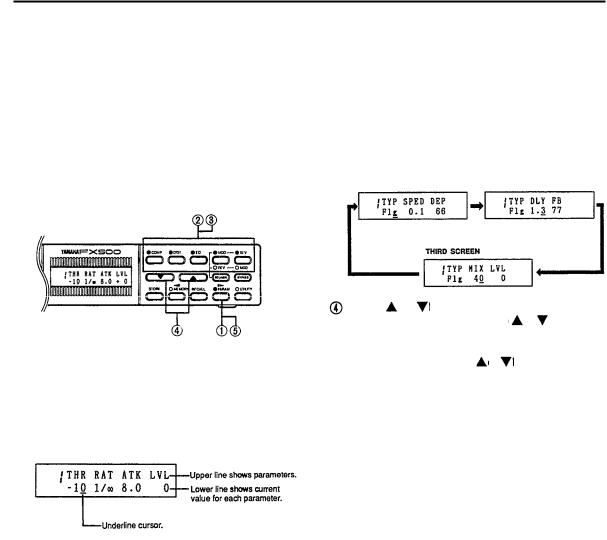
7. The Parameter Mode: Editing the Effect Programs
The parameter mode provides access to several important parameters for each effect, allowing you to change the sound of each effect over a broad range to suit your specific requirements. Once the parameters for each effect stage have been programmed and fine-tuned to provide exactly the sound you want, the entire effect program can be stored into one of the FX500’s RAM memory locations for later recall and use.
n Editing Parameter Data
 The parameter mode is entered by pressing the PARAM key. The parameter abbreviations are displayed on the upper line of the LCD, and the corresponding data values are shown on the bottom line (the parameters will be described in detail in the following sections).
The parameter mode is entered by pressing the PARAM key. The parameter abbreviations are displayed on the upper line of the LCD, and the corresponding data values are shown on the bottom line (the parameters will be described in detail in the following sections).
The PARAM mode can not be directly selected from the UTlLlTY mode by pressing the PARAM key. The UTILITY mode must first be exited by pressing several times or holding (about one second) the UTILITY key until the UTILITY key indicator goes out.
 Press the COMP, DIST, EQ, MOD or REV key to select the effect you wish to edit.
Press the COMP, DIST, EQ, MOD or REV key to select the effect you wish to edit.
 Press the selected effect key (i.e. the key you pressed in step
Press the selected effect key (i.e. the key you pressed in step , above) to move the cursor to the parameter to be edited. Each time the effect key is pressed the cursor moves one parameter to the right. In many effects, two or three parameter screens are required, so the next screen will appear when the cursor is moved past the last parameter on each screen. The first screen is re-selected after the last parameter on the last screen. The modulation stage flanger effect, for example, has the following three parameter screens:
, above) to move the cursor to the parameter to be edited. Each time the effect key is pressed the cursor moves one parameter to the right. In many effects, two or three parameter screens are required, so the next screen will appear when the cursor is moved past the last parameter on each screen. The first screen is re-selected after the last parameter on the last screen. The modulation stage flanger effect, for example, has the following three parameter screens:
FIRST SCREEN SECOND SCREEN
Use the |
and |
keys to adjust the value of the |
||
selected parameter. lf you hold the |
or |
key the data |
||
will scroll continuously in the specified direction. The |
||||
data will scroll faster if you press the opposite arrow |
||||
key while holding either the or |
key. |
|
||
 The effect selected for editing can be turned ON or OFF by pressing the PARAM key, so you can easily compare the direct and processed sound.
The effect selected for editing can be turned ON or OFF by pressing the PARAM key, so you can easily compare the direct and processed sound.
NOTE: To prevent accidental loss of edited data, the FX500 responds with a confirmation display — “RECALL OK ?”— if you press the RECALL key while editing in the PARAM mode. lf you actually intend to recall the original (pre-edit) effect, press the RECALL key a second time. lf you do not want to carry out the recall operation, simply press any key other than the RECALL key.
•Assigning MIDI CONTROLLERS to Effect Parameters
lf the SEL/ASN key is pressed in the PARAM mode, it becomes possible to assign external MIDI CONTROLLERS to diectly control effect parameters. Refer to “Assigning CONTROLLER 1 and CONTROLLER 2 to Specific Effects” on page 21.
11
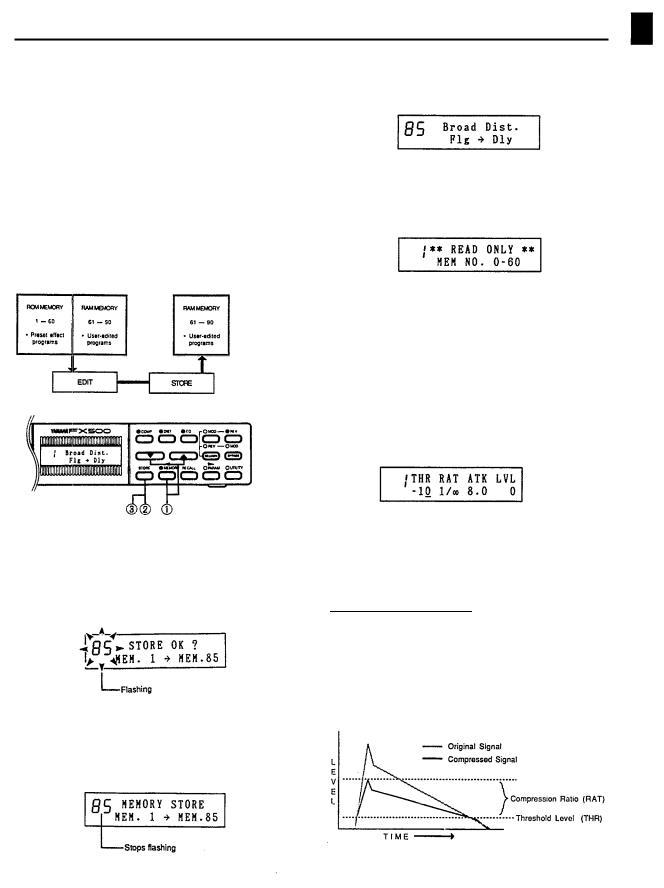
• Memory Store Operation
An edited effect program can be stored in any memory location within the FX500’s RAM memory area (61 through 90). Original effect programs stored in this way can be selected and used in exactly the same way as the preset effect programs. The ON/OFF status of each effect, the selected order of the MOD and REV stages and MIDI CONTROLLER assignments are stored along with all other parameter data. The UTILITY mode TlTLE EDlT function can be used to create new titles for your original effect programs after you have stored them in RAM memory. (See “Program Title Edit” on page 19)
 When the store operation is complete, the memory location stored to will be selected automatically.
When the store operation is complete, the memory location stored to will be selected automatically.
NOTE: lf you attempt to use the STORE function while a ROM memory location is selected, the following display will appear and the store operation will be aborted.
 After editing the parameters to create the desired effect, select the MEMORY mode and select the RAM memory location (61 — 90) with the
After editing the parameters to create the desired effect, select the MEMORY mode and select the RAM memory location (61 — 90) with the  or
or key to which you wish to store the edited data.
key to which you wish to store the edited data.
 Press the STORE key.
Press the STORE key.
 Press the STORE key again. The following display will appear for a few seconds while the store operation is in progress. lf you decide not to go ahead with the store operation, simply press any key other than the STORE key.
Press the STORE key again. The following display will appear for a few seconds while the store operation is in progress. lf you decide not to go ahead with the store operation, simply press any key other than the STORE key.
n COMPRESSOR (COMP)
The compressor effect stage produces sustain or simple “smoothing” by compressing the signal so that high levels are suppressed while low levels are effectively boosted. The use of compression before other effect stages is particularly effective because it limits the signal to a dynamic range that results in improved sound with the subsequent effects.
THR (Threshold: -60 — 0 dB)
Sets the compressor threshold level. signal levels exceeding the threshold level will be compressed while those below the threshold level will be unaffected.
RAT (Ratio: 1/2,1/4,1/8, 1/00)
This parameter sets the degree of compression. A compression ratio of 1/2, for example, compresses signals above the threshold level to one-half their original amplitude. A setting of 1/00 produces almost total compression, producing the same signal level for all signals above the threshold level. This yields the greatest degree of sustain.
12
